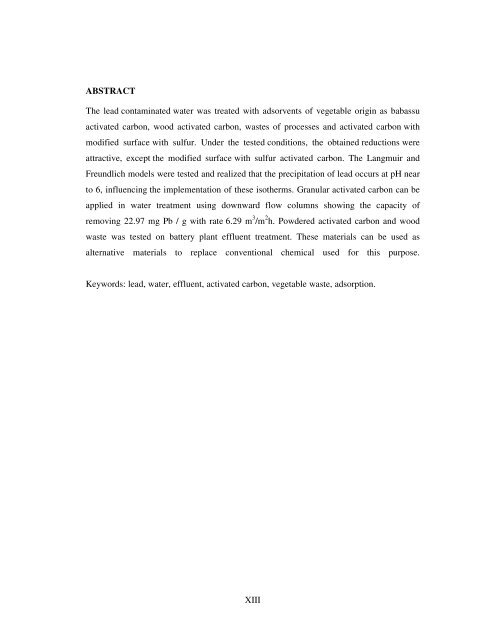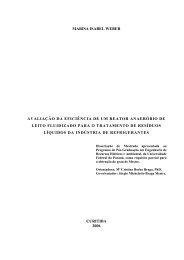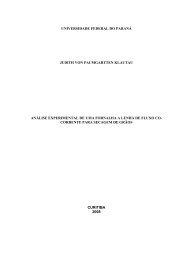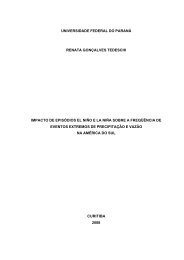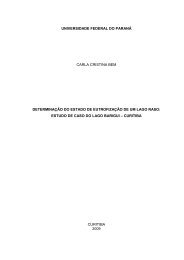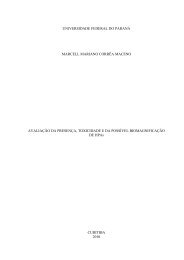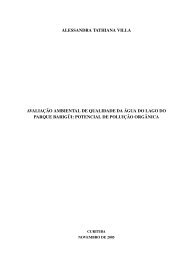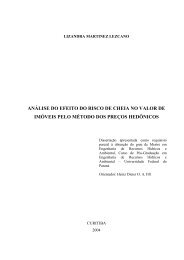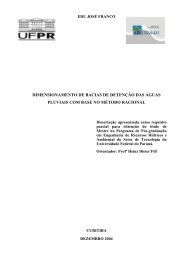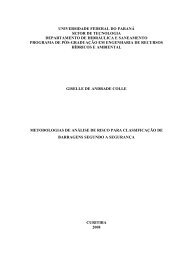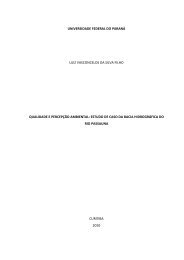Remoção de Chumbo de Meios LÃquidos Através de Adsorção ...
Remoção de Chumbo de Meios LÃquidos Através de Adsorção ...
Remoção de Chumbo de Meios LÃquidos Através de Adsorção ...
You also want an ePaper? Increase the reach of your titles
YUMPU automatically turns print PDFs into web optimized ePapers that Google loves.
ABSTRACT<br />
The lead contaminated water was treated with adsorvents of vegetable origin as babassu<br />
activated carbon, wood activated carbon, wastes of processes and activated carbon with<br />
modified surface with sulfur. Un<strong>de</strong>r the tested conditions, the obtained reductions were<br />
attractive, except the modified surface with sulfur activated carbon. The Langmuir and<br />
Freundlich mo<strong>de</strong>ls were tested and realized that the precipitation of lead occurs at pH near<br />
to 6, influencing the implementation of these isotherms. Granular activated carbon can be<br />
applied in water treatment using downward flow columns showing the capacity of<br />
removing 22.97 mg Pb / g with rate 6.29 m 3 /m 2 h. Pow<strong>de</strong>red activated carbon and wood<br />
waste was tested on battery plant effluent treatment. These materials can be used as<br />
alternative materials to replace conventional chemical used for this purpose.<br />
Keywords: lead, water, effluent, activated carbon, vegetable waste, adsorption.<br />
XIII


